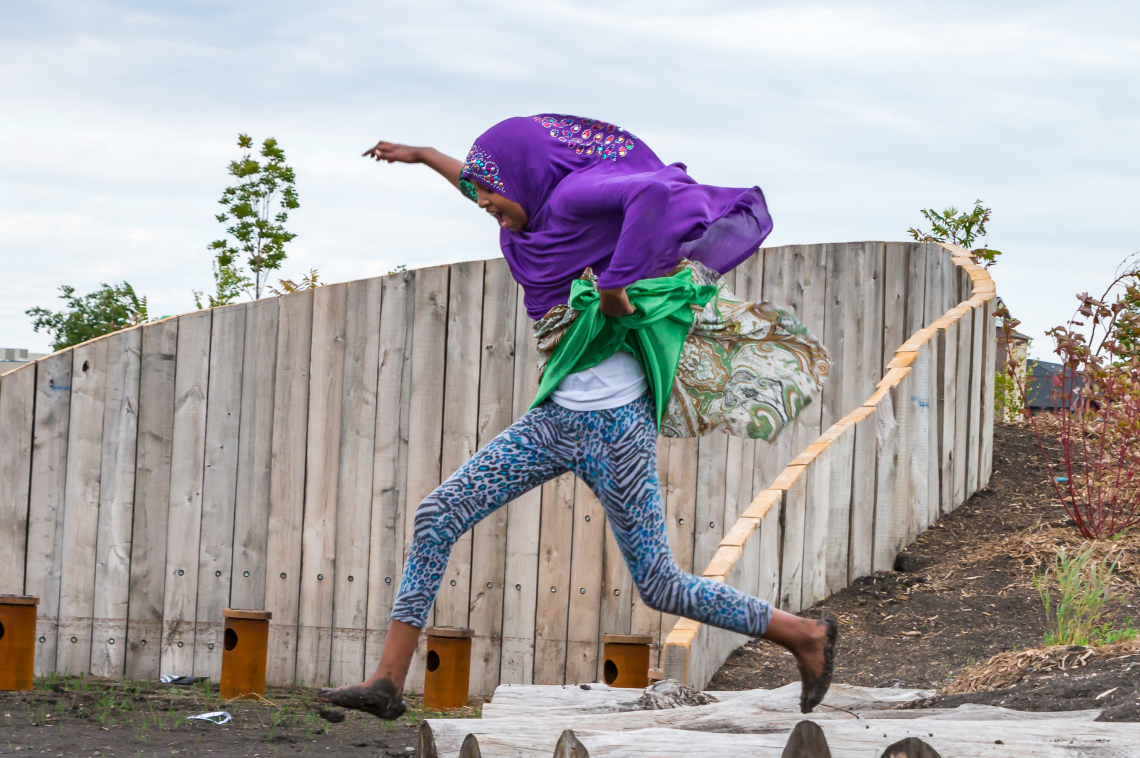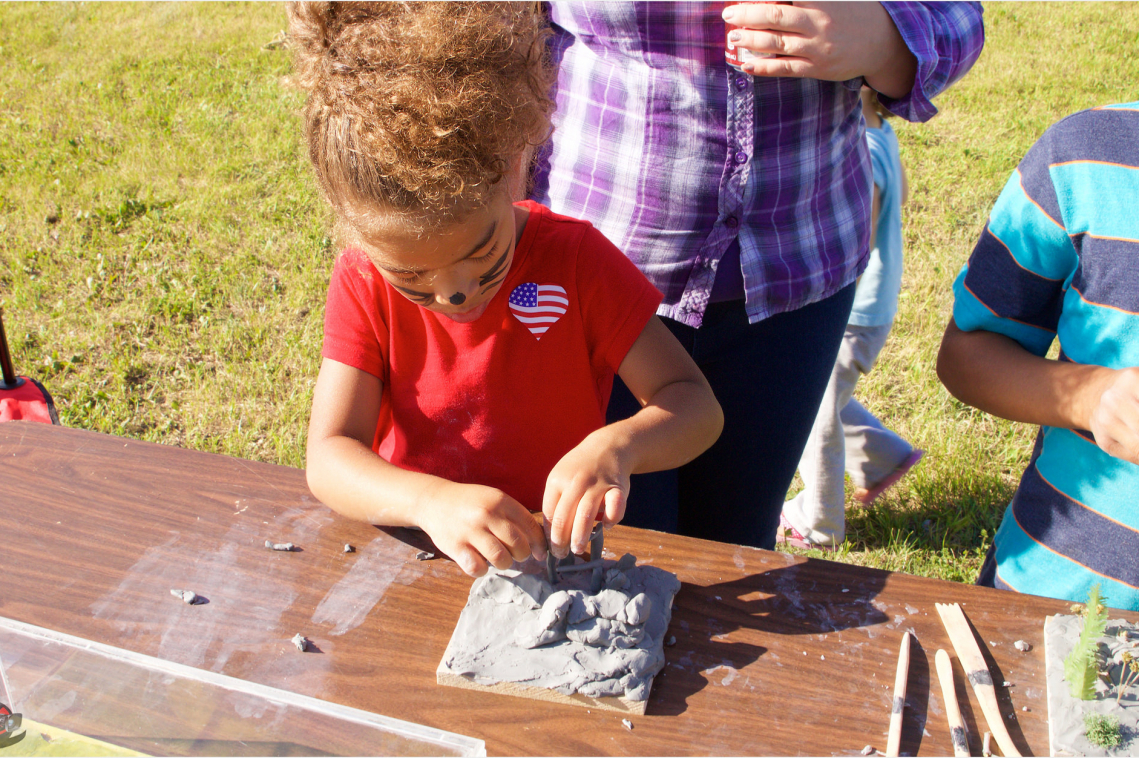

A version of this post originally appeared on Impacting Our Future.
What can the arts and culture do for our communities? A striking answer can be seen in Fargo, North Dakota, where residents came together with artists to show that civic and cultural improvements often go hand-in-hand.
The City of Fargo, ND is located near the Red River, which floods seasonally. To manage this, Fargo has built storm water retention basins—as big as over a dozen football fields side-by-side—that take up a large amount of public space and physically separate neighborhoods. During a flood or heavy rainfall, these large basins collect storm water to protect traffic and property. But when they aren’t collecting water, they are just ugly, dry, empty lots.
The city of Fargo wanted to make better use of these empty basins and improve the lives of the people living near them. The community began working with environmental artist Jackie Brookner to solve this problem, and local artists joined forces with residents in a multi-year process of re-imagining how the spaces could be used. These creative techniques “bring a different kind of imagination in,” Brookner said, and allow “more room for surprise and tapping into the whole person.”
The Fargo Project, funded by ArtPlace in 2014, provides opportunities for local government to respond to and work with the community and identify their needs through a participatory process. With water as the vehicle for connecting people to the land, this approach intentionally activates collective creative agency. Artists, neighbors, engineers, landscape architects, and ecologists work together to develop a solution to transform a neighborhood storm water basin that fits their unique needs as a community.
The residents surrounding one of these basins—including Native Americans, Scandinavian-Americans, and refugees from various African countries—worked alongside planners, engineers, landscape architects, and ecologists to make better use of it. The results were the addition of a sculpture, a natural amphitheater, community gardens, festival spaces, and other amenities. Together, this “team” transformed 18 acres of formerly vacant land into the World Garden Commons (WGC), a vibrant social, cultural, and ecological hub. (The interactive map on their website describes more about all the features being planned.)
The WGC site is located within Rabanus Park, adjacent to the Schlossman YMCA and a quarter mile from the West Acres Mall. Nestled between both residential and commercial property, the park already hosts many amenities including volleyball courts, walking trails, a warming hut, and a community garden—as well, of course, as the large storm water basin.
Now, the WGC is poised to celebrate multiple cultures, provide a greater variety of public facilities, and reconnect a historically isolated neighborhood. Ms. Brookner, along with the teams of artists and city planners, led community planning and design processes to refine and implement the specific features of the project. The team then further developed their partnership with social service organizations that work with local Native and New American populations around programming and activation.
While the basin continues to do what it was designed to do—hold excess storm water—the community’s improvements to it are undeniable. Along with the space’s enhanced beauty, there’s now better water quality, as well as pathways to connect the peripheral neighborhoods. The artists even convinced the city to stop mowing the fields to see what would grow. Not only was the resulting natural landscape of native prairie grasses beautiful, it also helped to squash invasive species, saving the city money on maintenance and landscaping.
City of Fargo Planning Director Nicole Crutchfield summed up the project’s success: “By working with artists and using creative problem-solving, we were able to find solutions that functioned on multiple levels—ecological, spiritual, infrastructural, and aesthetic. We picked up on nuances about what the community needed and what worked that we otherwise would have missed if we had approached it using our conventional planning methods.”
The effort was so successful that Fargo has begun to work with community-based artists on other infrastructure projects. It believes so strongly in this approach that it has created a workbook to help other communities understand the benefits of working with artists, and how to do it effectively.
How is your city collaborating with artists in unexpected ways? The answer to this question could be the next innovative solution your community needs.
The Fargo Project: World Garden Commons is featured in the ArtPlace exhibition “10 Sectors, 10 Solutions: Artists and Community Change,” which opened at the University of Maryland School of Architecture, Planning & Preservation on October 5, 2018 and is on view until January 1, 2019.
Further reading:
Farther, Faster, Together: How Arts and Culture Can Accelerate Environmental Progress (Helicon Collaborative, 2018)
Advancing One Water Through Arts and Culture: A Blueprint for Action (US Water Alliance, 2018)





